This article was co-authored by Hilya Tehrani, PsyD. Dr. Hilya Tehrani is a Licensed Clinical Psychologist with over twenty years of experience. She specializes in working with children and adolescents. Dr. Tehrani also has expertise in supporting individuals with autism, ADHD, anxiety, behavioral challenges, and learning and processing differences. She holds a BA in Psychology from The University of California, Los Angeles, an MA in Clinical Psychology from California State University, Northridge, and a PsyD in Clinical Psychology from Pepperdine University.
There are 9 references cited in this article, which can be found at the bottom of the page.
wikiHow marks an article as reader-approved once it receives enough positive feedback. In this case, 91% of readers who voted found the article helpful, earning it our reader-approved status.
This article has been viewed 78,582 times.
You can help your child with an ASD (Autism Spectrum Disorder) cope with the world, or even with the house. Use these tools to assist your child to live in a healthy and growth-oriented environment. Here are some of those strategies for helping.
Steps
Providing a Soothing Environment
-
1Maintain consistency. Your child may have a hard time understanding how the world works around him or her. Maintaining consistency helps your child to find routines, rituals (such as tooth brushing at a certain time or after a given event like eating), a concept of order in what is otherwise perceived as chaos.[1] It will help both your child and you to write down a specific schedule of the day and then to follow it when possible. An example of a beginning routine (schedule*) outlined below
- Wake up.
- Use bathroom.
- Wash hands.
- Wash face.
- Come downstairs
- Get in chair.
- Eat breakfast.
- Put plate in sink when done eating.
- Watch X educational, child oriented TV program.
-
2Avoid making unnecessary changes, especially in what your child perceives as their domain. Sudden changes may overstimulate your child.[2]
- Cleaning a room is necessary. Changing the order of items on the bureau is not.
- Change increases anxiety and fear that the order of things is falling apart.
- When changes are necessary, involve your child in the process so it is not a complete surprise. If you move furniture, for example, try to engage your child in the process, or at least allow them to observe and be aware of the changes. Explaining the reason for the change will help them understand why this is happening and make it less scary.
- When changes occur in things like clothing or food, trying to find similar items will be less frightening for your child.
- Some autistic people cannot handle rough textures, and best tolerate untreated/soft cotton. Exchange (or add) cotton for or to cotton items. Keep colors in the same family.
Advertisement -
3Use natural or full spectrum lighting whenever possible.
- Children are often overwhelmed by fluorescent lighting, as it strobes. Non-autistic people often cannot see this, but many autistic people can. If you see that your child looks distressed or that the lights are flickering, ask if the lights are being bothersome.
-
4Consider noises in the environment. Autistic children are most often sensitive to noise. Noises that non-autistics can filter out can be confusing or even painful to an autistic person. Create a calm environment to reduce overstimulation.[3]
- Buffer ‘rebound’ noise, or loud sounds in general by putting tapestries on walls, using soft fabrics on furniture that has some texture, adding room dividing decorative elements etc.
- Be careful about competing sounds. The television will get turned up if people are speaking, which will cause people to speak louder and so forth. The more competing sounds, the more likely your child is to hear a loud mush of unintelligible sound only and become overwhelmed.
-
5Let them retreat to a quiet area when they want to. If your child starts becoming overwhelmed, they will naturally seek out what they need: peace. Try creating a quiet enclave where they can retreat when needed.
- Don't let siblings and other family members bother your child when they need quiet. This could lead to an outburst.
- If they were in the middle of something, such as eating or doing homework, let them come back to it once they are calmer. Or, they may be able to do it in the quiet location, such as a teenager eating in her bedroom.
-
6Ensure safety around your home. Autistic children are often very curious about their environments. This can include the dangerous parts. Interest in things that may be dangerous must be monitored, such as a fish tank with glass and electric components to heat or aerate the water.
- Set boundaries and explain why the boundary is set. For example, "It is not okay to play with the power outlets, because you could get hurt."
- If your child isn't likely to be cautious, it may be better to move fish tanks out of reach.
- Offer to explore the fishtank or heater together, explaining it as best as you can. This allows you to monitor your child's safety while sating your child's curiosity.
- If age-appropriate, show your child the wonders of the internet and all its diagrams. Also check the library for picture books with diagrams.
Understanding Autistic Differences
-
1Understand stimming. Stimming includes a variety of activities that stimulate the senses.[4] (staring at turning wheels, making repeated noises, etc.). It allows autistic people to express themselves and feel good.
- Stimming helps prevent meltdowns, increases self-control, and enables better focus.[5] Be wary of therapists who wish to end stimming, as this may harm your child.[6]
- If your child stims in a harmful way, talk to a therapist about finding a substitute stim that fulfills the same need. You can also reach out to autistic people through #AskAnAutistic, as they may have had the same stim, and could offer advice on finding a good replacement. For example, a girl who bites herself when stressed could bite a chewy bracelet instead.
-
2Understand the importance of special interests. Autistic children often experience intense, passionate interests in certain areas. These interests provide joy in their lives, and can be used as tools to develop new skills (e.g. library books about cats to encourage reading and study skills).[7]
- Relating new information to the child's passions may help the child be interested and engaged in learning. For example, if your child struggles with social skills and loves dinosaurs, she may enjoy books about dinosaur friends.
-
3Expect different body language. Autistic people don't always look at something or someone they are listening to, and may stim while listening. Thus, even if they look inattentive by non-autistic standards, they may be listening closely to every word you say.
-
4Know the signs of sensory overload. Overload is when a person becomes overwhelmed by sensory stimuli and experiences a meltdown or a shutdown. Both cases may involve crying, covering ears, panicked stimming, and avoidant behavior.
- Meltdowns may be characterized by screaming, crying, throwing oneself on the floor, etc. Unlike tantrums, meltdowns are caused by a build-up of stress, and the child feels a loss of control.[8] Autistic people often feel bad about melting down afterwards.[9]
- Shutdowns are characterized by withdrawal, distress, passivity, and loss of interest or ability to communicate.
- Occupational therapists can increase your child's tolerance to stimuli through sensory integration therapy.
- Help your child calm down by learning what sensory profile they respond best to. For instance, some kids might respond to the deep pressure of a weighted blanket. Others might calm down from jumping, and could benefit from access to a trampoline.[10]
-
5Check up on the child's health with their GP regularly. Some autistic children cannot tell you if their tummy hurts or if their ear aches. Other autistic children don't understand the sensations their body is telling them and may not realize that they are sick. Keep an eye on your child's behavior. If you sense something unusual in the child's health, ask them how they are feeling (as sometimes that prompts them to think hard and realize something as wrong), and call your GP immediately if you believe they are ill.
- Self-injurious stimming may signal a health issue. For example, a child might head-bang when they have tooth pain.[11]
Promoting Learning
-
1Speak to your child often. Talk to your child, even if the conversation is one-sided for now, and let them participate in conversations as well as hearing them.
- Some autistic children have the ability to speak, but do not understand the need to do so. Keep your child informed, while also increasing language exposure and teaching simply by talking with your child as you go about your day.
- Speak as if you expect your child to answer (either verbally or nonverbally). All too often, parents talk about their child without talking with their child. This only increases the sense of not being a part of things for your child.
- For young children, speak in clear and concrete language. Speak avoiding slang and expressions (it is raining cats and dogs), but do not talk down to your child, because (s)he can tell the difference. For older children, talk normally and respectfully, making it clear that you will be polite if your child is confused by a figure of speech or needs you to repeat something.
-
2Encourage communication, verbal and otherwise. If your child cannot speak yet, find a form of AAC (such as picture exchange, sign language) that will allow them to express themselves. Being able to communicate needs, thoughts, and feelings can reduce frustrations and meltdowns in your child.
- Watch for nonverbal responses. For example, if you ask "Did you have fun at preschool?" and your child flaps their hands and shrieks happily, then this is their answer. Continue maintaining a dialogue.
- Don't pressure your child to speak. Some autistic people are incapable of speaking, or they find it difficult and stressful. Allow your child to communicate through gestures, sign language, or by pointing to a picture board.
-
3Make it clear that the word "no" is important. This means that your child needs to listen when you tell them no, and that you will pay attention to them if they communicate a no. Help by following up with an explanation, such as "If you wander off without telling me, I feel scared and worried that you aren't safe."
- Obviously, if your child says "no" to bedtime or their car seat, you don't need to follow it. But you can slow down and explain why it is important. This lets them know that even though you won't always do what they want, the word "no" has meaning.
- If you ignore a child's attempts to say no or set boundaries (e.g. "I don't like kisses"), they may learn that "no" isn't important. If no one listens to them, they learn that listening is optional, so they won't listen to you.
-
4Explain the rules, and the behavior that you expect. Your child is competent and capable of following rules, so expect them to do so. Clearly describe the rules to your child, why the rules are in place, and explain what they should do instead of doing something wrong.[12]
- For example, "It is not okay to hit people because hitting hurts them. Instead of hitting, please talk to them, take time to cool off, or ask an adult for help if you don't know what to do."
-
5Understand the use of visual stimuli. Many times autistic kids are visually oriented. Sometimes nonverbal children are able to communicate using sign language or by pointing to pictures in a special book put together to help them communicate. Even autistic kids who speak may benefit by making a visual chart for the schedule for the day. If you're trying to teach your child how to do something it may help to make a picture chart. (Some autistic kids can even repeat verbal instructions word for word but still lack the ability to turn those instructions into actions in their head. Pictures may somehow help them to do that.)
-
6Find fun, constructive therapies that help your child grow. Therapy can help your child grow into a happy, healthy, well-adjusted autistic person. Pinpoint specific issues, such as social uncertainty or sensory sensitivity, and work with the therapist to help your child develop skills.
- Avoid therapies that involve forced normalization, compliance, or too many hours per week. Your child should be able to set boundaries, be themselves, and have time to enjoy childhood.
Adjusting Your Attitude
-
1Recognize that autism is lifelong. Your child will always be autistic, even as an adult. This doesn't mean they will be miserable, or that they will have a terrible life. There are many autistic people who grow into happy autistic adults. They don't have to be "normal" in order to have a good life.
-
2Quit measuring yourself and your child against other families. Your child is different, so it's okay if they aren't talking as much as Robert next door or reading chapter books like Amaya down the street. Autistic kids follow their own timeline.[13] This doesn't mean that you're a bad parent, or that either one of you is a failure. You are raising your child, not anyone else's, so you don't have to do what they are doing.
- Make goals based on building upon where your child already is, not where the developmental timelines say they "should" be. This might mean getting chapter books for your six-year-old, or teaching your fourteen-year-old to type.
-
3Teach your child about autism early on. If you delay telling them, they may think it is something to be scared or ashamed of. Tell them early on, and expect to have multiple conversations over time. Use an open and factual tone of voice to indicate that autism is nothing scary or bad.
- Frame it in terms of strengths as well as needs. For example, "Autism is why loud noises bother you and transitions are hard. It's also why you know so much about dogs, and love nature so much. It has hard parts and fun parts."
-
4Have the attitude that you're in it for the long haul. There will be days when your child does well, and days when they melt down or struggle to perform skills they could do before. Don't be discouraged. Sometimes finding out what isn't working can be as beneficial in the long run as finding out what works, so you know what to avoid.
-
5Learn from autistic teens and adults. They can offer advice if you don't know what to do about your child smearing peanut butter on the floor or crying at birthday parties. Many of them went through the same things as children, and can offer a first-person perspective on what it was like. They can tell you what worked for them, what didn't work, and what they'd like you to know.
- The hashtag #ActuallyAutistic is for autistic people to write things (which non-autistics may read), and the hashtag #AskAnAutistic is where anyone can post questions for autistic people to answer.
- Watching them can also give you an idea of what your child may look like as an adult.
-
6Trust your instincts about how your child is treated. You know your child, you have experience reading and learning their body language, and you can tell when something is upsetting to them or too far outside their comfort zone. If you think that a specialist is not treating your child well, take yourself seriously.
- Bad therapies exist.
- Therapy should not be grueling or painful work. If it often results in tears and frustration, you have a right to be concerned.
- If a therapist is making you uncomfortable, tells you not to trust yourself, or bars you from seeing the therapy, this is not okay. If you feel concerned about your child being upset in therapy, this is valid. Your instincts matter, and a therapist should respect them.
- It is okay to decline a certain type of therapy, or to decide to see a different therapist.
-
7Love your child. You are the model of what others will think and believe about your child. If you treat your child with kindness and respect, others will too, and your child will grow up feeling like a complete and worthwhile person. It is perfectly fine to explain to someone that your child is autistic, but never apologize for it and never make excuses. Your child is lovable, autism and all.
Expert Q&A
-
QuestionHow can I help an autistic child at school?
 Hilya Tehrani, PsyDDr. Hilya Tehrani is a Licensed Clinical Psychologist with over twenty years of experience. She specializes in working with children and adolescents. Dr. Tehrani also has expertise in supporting individuals with autism, ADHD, anxiety, behavioral challenges, and learning and processing differences. She holds a BA in Psychology from The University of California, Los Angeles, an MA in Clinical Psychology from California State University, Northridge, and a PsyD in Clinical Psychology from Pepperdine University.
Hilya Tehrani, PsyDDr. Hilya Tehrani is a Licensed Clinical Psychologist with over twenty years of experience. She specializes in working with children and adolescents. Dr. Tehrani also has expertise in supporting individuals with autism, ADHD, anxiety, behavioral challenges, and learning and processing differences. She holds a BA in Psychology from The University of California, Los Angeles, an MA in Clinical Psychology from California State University, Northridge, and a PsyD in Clinical Psychology from Pepperdine University.
Licensed Clinical Psychologist Try to figure out what your child's learning needs are. Some autistic children prefer a lot of visual support, while others prefer to learn at a slower or faster pace.
Try to figure out what your child's learning needs are. Some autistic children prefer a lot of visual support, while others prefer to learn at a slower or faster pace. -
QuestionHow can I help my autistic child make friends?
 Hilya Tehrani, PsyDDr. Hilya Tehrani is a Licensed Clinical Psychologist with over twenty years of experience. She specializes in working with children and adolescents. Dr. Tehrani also has expertise in supporting individuals with autism, ADHD, anxiety, behavioral challenges, and learning and processing differences. She holds a BA in Psychology from The University of California, Los Angeles, an MA in Clinical Psychology from California State University, Northridge, and a PsyD in Clinical Psychology from Pepperdine University.
Hilya Tehrani, PsyDDr. Hilya Tehrani is a Licensed Clinical Psychologist with over twenty years of experience. She specializes in working with children and adolescents. Dr. Tehrani also has expertise in supporting individuals with autism, ADHD, anxiety, behavioral challenges, and learning and processing differences. She holds a BA in Psychology from The University of California, Los Angeles, an MA in Clinical Psychology from California State University, Northridge, and a PsyD in Clinical Psychology from Pepperdine University.
Licensed Clinical Psychologist Bring them to see an occupational therapist! A therapist can offer strategies and suggestions to help your child feel calmer and less antsy in social situations.
Bring them to see an occupational therapist! A therapist can offer strategies and suggestions to help your child feel calmer and less antsy in social situations. -
QuestionHow can I help my autistic child at home?
 Hilya Tehrani, PsyDDr. Hilya Tehrani is a Licensed Clinical Psychologist with over twenty years of experience. She specializes in working with children and adolescents. Dr. Tehrani also has expertise in supporting individuals with autism, ADHD, anxiety, behavioral challenges, and learning and processing differences. She holds a BA in Psychology from The University of California, Los Angeles, an MA in Clinical Psychology from California State University, Northridge, and a PsyD in Clinical Psychology from Pepperdine University.
Hilya Tehrani, PsyDDr. Hilya Tehrani is a Licensed Clinical Psychologist with over twenty years of experience. She specializes in working with children and adolescents. Dr. Tehrani also has expertise in supporting individuals with autism, ADHD, anxiety, behavioral challenges, and learning and processing differences. She holds a BA in Psychology from The University of California, Los Angeles, an MA in Clinical Psychology from California State University, Northridge, and a PsyD in Clinical Psychology from Pepperdine University.
Licensed Clinical Psychologist Create a steady, predictable routine for your child. Autistic kids aren't always good at anticipating things, so predictability, structure, and routine are very helpful.
Create a steady, predictable routine for your child. Autistic kids aren't always good at anticipating things, so predictability, structure, and routine are very helpful.
Warnings
- Don't spoil your child. There are a lot of spoiled kids who have disabilities. Special needs kids learn to manipulate just like regular kids. (Read the parenting books!) Set appropriate limits with appropriate modifications. Finding the right balance is probably one of the most difficult parts of having a special needs kid. (Don't worry, you have time to evaluate what's going on and make adjustments.)⧼thumbs_response⧽
- Finding that your child is out of control most of the time, even when employing the above, would warrant a visit from a behavioral and environmental specialist whose expertise is in Autism Spectrum Disorders.⧼thumbs_response⧽
- Watch out for abusive therapists. Tactics such as Quiet Hands[14] can lead to Post-Traumatic Stress Disorder.[15] Screen all therapists for abusive punishments and negative attitudes.⧼thumbs_response⧽
References
- ↑ Hilya Tehrani, PsyD. Licensed Clinical Psychologist. Expert Interview. 27 August 2021.
- ↑ Hilya Tehrani, PsyD. Licensed Clinical Psychologist. Expert Interview. 27 August 2021.
- ↑ Hilya Tehrani, PsyD. Licensed Clinical Psychologist. Expert Interview. 27 August 2021.
- ↑ http://www.ican-do.net/sensory_play.htm
- ↑ http://musingsofanaspie.com/2013/06/18/a-cognitive-defense-of-stimming-or-why-quiet-hands-makes-math-harder/
- ↑ http://juststimming.wordpress.com/2011/10/05/quiet-hands/
- ↑ Hilya Tehrani, PsyD. Licensed Clinical Psychologist. Expert Interview. 27 August 2021.
- ↑ https://musingsofanaspie.com/2012/12/13/anatomy-of-a-meltdown/
- ↑ http://emmashopebook.com/2014/10/01/raging-screams-and-shame/
- ↑ Hilya Tehrani, PsyD. Licensed Clinical Psychologist. Expert Interview. 27 August 2021.
- ↑ https://kirstenlindsmith.wordpress.com/2016/02/05/the-dark-side-of-the-stim-self-injury-and-destructive-habits/
- ↑ Hilya Tehrani, PsyD. Licensed Clinical Psychologist. Expert Interview. 27 August 2021.
- ↑ https://musingsofanaspie.com/2014/12/12/chronologically-out-of-step/
- ↑ http://thecaffeinatedautistic.wordpress.com/2013/02/10/on-stimming-and-why-quiet-handsing-an-autistic-person-is-wrong/
- ↑ http://juststimming.wordpress.com/2011/10/05/quiet-hands/






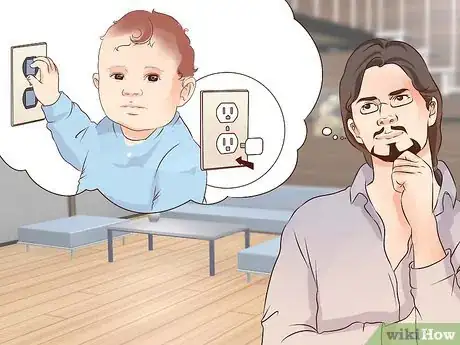


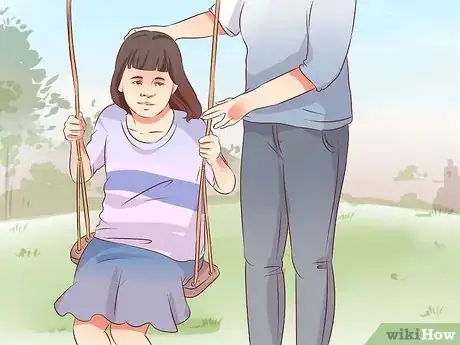


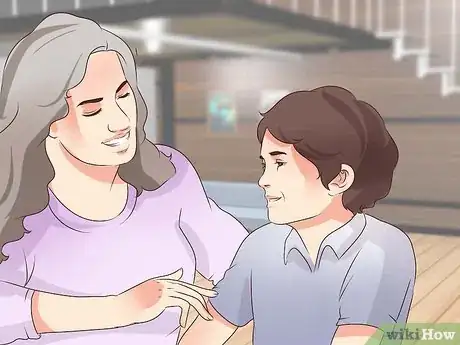
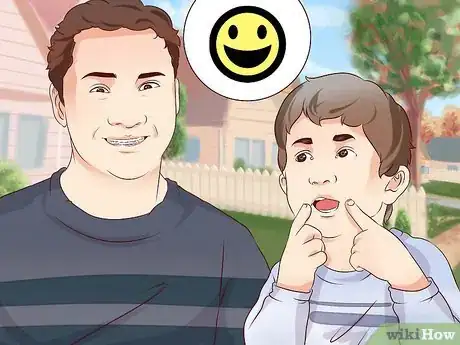

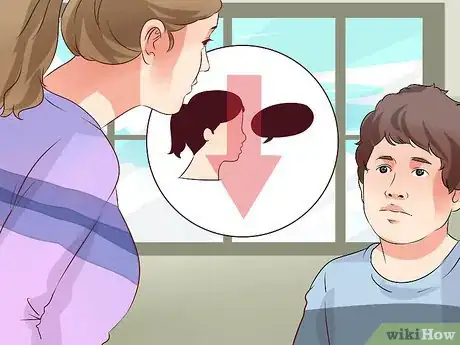
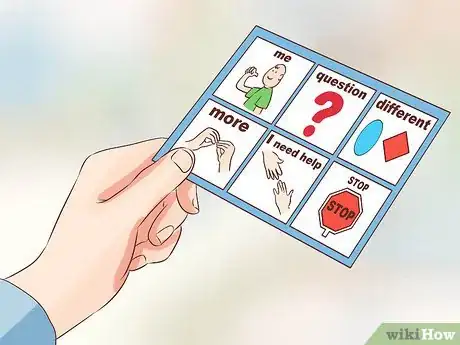


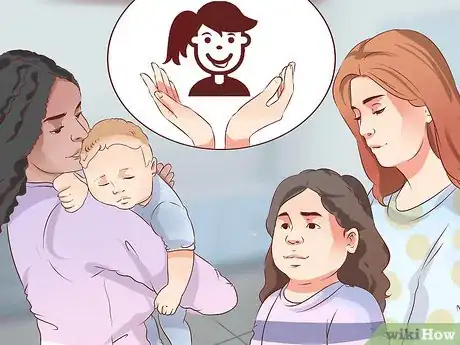
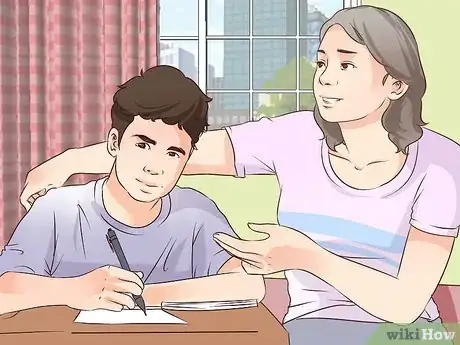






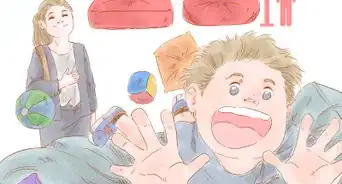























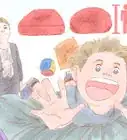




































Medical Disclaimer
The content of this article is not intended to be a substitute for professional medical advice, examination, diagnosis, or treatment. You should always contact your doctor or other qualified healthcare professional before starting, changing, or stopping any kind of health treatment.
Read More...